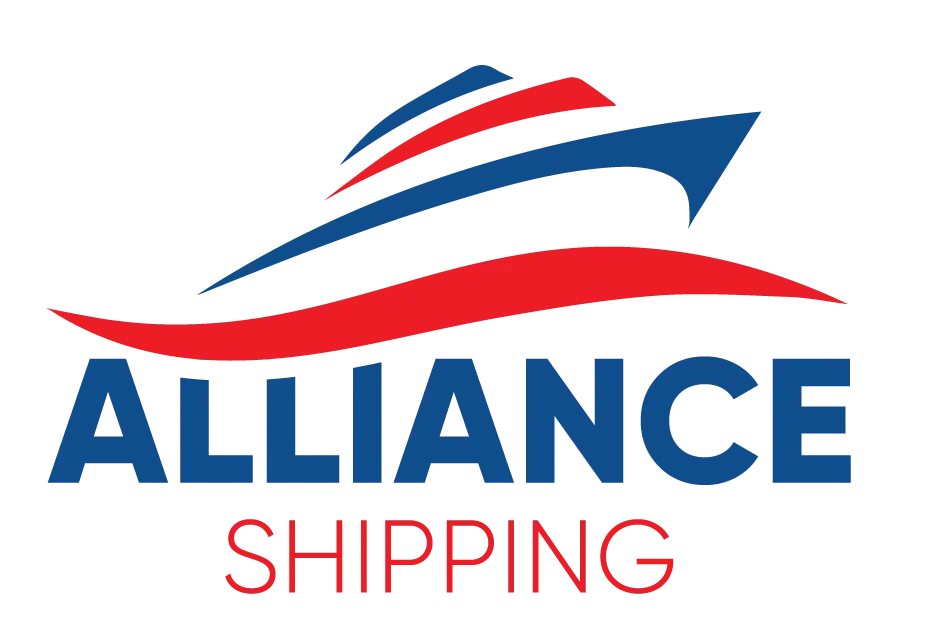Shipping dairy products is now becoming common because of e-commerce, where a variety of dairy products are shipped directly to consumers. However, transporting fresh products such as milk, cheese, yogurt, and ice cream in successive terms is different from non-perishable products. The consumer is therefore very demanding with his/her expectations of quality products, convenience, and safety standards. That’s when Alliance Shipping comes in handy.
This guide provides essential strategies and considerations to ensure the safe and efficient shipping of dairy products while building a strong foundation of customer trust and satisfaction.
Understanding the Core Needs of Dairy Shipping
Of all the various fundamentals involved with dairy shipping, it is necessary to comprehend the most basic needs. The challenges of shipping dairy products are unique because these products are perishable commodities. Some of the products include milk or soft cheese, which need to be fresh throughout the entire time and safe from being spoiled. However, dairy products are very delicate commodities that are affected by temperature and handling, even slightly affecting output quality.
Some of the factors that influence consumers on shipping dairy products include:
- Convenience: Shopping at any time without visiting a physical store.
- Reliability: Assurance that products arrive fresh and intact.
- Flexibility: Access to products that may not be available locally.
Key Considerations for Packaging Dairy Products
Packaging is critical to preserving dairy freshness and quality. Beyond the standard shipping box, packing for dairy requires insulation, coolants, and durable materials that can handle frequent transfers. Below are essential aspects to keep in mind:
Insulation: High-quality materials like foam inserts or eco-friendly insulation liners can help regulate temperature.
Coolants: Gel packs or dry ice keep dairy products cool. Plan to freeze gel packs in advance and add them based on product requirements. Generally, one pound of gel pack per two pounds of dairy product is recommended.
Sealing and Stability: Ensuring product packaging is secure helps avoid leaks, contamination, and damage. Cushioning materials such as crinkle paper can keep items stable within the box.
Optimizing Shipping and Delivery Processes
Choosing the right shipping carrier and service level is essential. For dairy products, expedited services like next-day or two-day shipping are often necessary to prevent spoilage. When selecting a carrier, consider the following:
Delivery Speed: Opt for faster shipping methods to reduce the risk of spoilage.
Geographic Coverage: Ensure the carrier provides reliable service to the regions you target.
Value-added Services: Tracking, signature confirmation, and temperature monitoring services can enhance delivery accuracy and customer satisfaction.
Self-delivery may be an option if customers are within close proximity. For long distances, Alliance Shipping offers specialized warehousing and storage options for perishable goods, with guidelines that ensure food safety.
Effective Cost Management for Dairy Shipping
Shipping dairy products involves various costs beyond standard shipping fees. Common expenses include specialized packaging materials, additional labor for handling, and temperature-regulated shipping fees. Consider these strategies to manage costs:
Bulk Ordering of Supplies: Shipping in bulk can reduce costs. Look for reliable suppliers of boxes, insulation, gel packs, and other materials.
Transparent Pricing: Decide if the cost of shipping will be included in the product price or billed separately. Studies show that transparency in shipping fees helps build customer trust, especially if shipping costs for perishables are higher.
Cost-sharing Strategies: Offer discounted or free shipping for larger orders to incentivize bulk purchases, offsetting costs.
Customer Service and Quality Assurance
Shipping dairy products directly to consumers requires maintaining high levels of quality and customer support. Since perishable products need immediate attention upon arrival, here are steps to ensure customer satisfaction:
Clear Shipping Policies: Post shipping schedules, expected delivery times, and temperature requirements on your website.
Customer FAQs: Address common questions, such as packaging details, refrigeration needs, and handling upon receipt.
Product Tracking and Traceability: Keep detailed records of product batches and shipping information to ensure quick recall and customer communication if necessary.
Key Challenges in Dairy Product Delivery Packaging
Producers and distributors face a number of significant obstacles in securely shipping dairy products from production to consumers. Here are the main obstacles they must overcome:
Hygiene: Keeping clean & maintaining hygiene is always essential – from its production, processing, distribution, and consumption. Hazards are present from the time the food item was a product of the farm or was processed and packaged, as it is exposed to many dangers such as spillages, dirt, mold, and contact with other foods. To avoid these risks the right packaging for dairy products should be used, this offers protection against the contaminants.
Temperature Control During Storage and Transportation: Dairy products need to be stored at a relatively low temperature to maintain quality and time longevity. These considerations affect choices of storage and handling, as well as methods of carriage. Luckily, the dairy product delivery packaging solutions for these products neither degrade rapidly in extreme temperatures nor transfer coldness to the commodities, hence they are fit for cold storage.
Gentle Handling: Milk products are by nature delicate and sensitive to mechanical stresses. Milk bottles, yogurt containers, and cheese blocks are very delicate to handle and usually experience breakages when in transit. As much as the products require delicate handling, the distributors face the disadvantage of having to meet the short timelines of delivery schedules. This requires very gentle handling and shipping of dairy products.
Different Methods of Dairy Shipping
Road Transport: Road transport remains the most suitable for shipping dairy products since it is flexible and relatively cheap. Still, road shipping can also be affected by delay due to its slow nature and its openness to natural vices such as unfavorable weather conditions.
Sea Transport: Sea transport is the most preferred mode of transport for a long-haul dairy product shipment because of its relatively low cost. Although the system enjoys some merits, its lower rate which can be affected by unfavorable weather conditions may cause some problems.
Air Transport: Known as the fastest approach to dairy transit, air freight is also one of the safest. However, due to it expensive and prone to interruption by weather factors, it may not go viral. This can cause a downside of delay because of weather conditions is still possible.
Tips for Successful Dairy Shipping
Maintain Cold Temperatures: Dairy products are famously known to have a relatively very short shelf-life and hence are usually required to be refrigerated mostly. Be specific and make sure products remain below 40F all through the shipping procedure. Maintain the proper temperature that is needed by using refrigerated trucks, containers, and storage facilities.
Prioritize Timely Delivery: Readily available transport is very relevant to shipping dairy products to retain the perfect or nearly perfect quality. Finished products should be quickly transported to the processing plants to avoid cases of spoiled products due to delay. Timely delivery is equal to preserving freshness while shipping dairy products.
Choose a Reliable Shipping Company: Choose a logistics company that has a track record of handling and shipping dairy products, across borders, like Alliance Shipping. The exporters specializing in shipping dairy products would follow industry norms and have a proper way to handle them, hence no violation of rules.
Monitor Shipments: Track the places of your dairy product shipments using tracking services offered by Alliance Shipping. This gives a real opportunity for controlling and making timely interventions in case there are alterations to the planned route or time schedule. You can trust the shipping company better if you can monitor your shipment.
Shipping Dairy Products with Alliance Shipping
Shipping dairy products involves a sound strategy for packaging these products and good customer relations. From quality packing, reliable delivery systems, and good communication, dairy firms can be in a good position to satisfy consumers’ expectations in terms of quality that has not been affected and safety. As the customer need for purchasing dairy products online increases, the firms that care for their customer’s needs will thrive in the market.
With the right strategies, dairy businesses can expand their customer base beyond local markets, providing a convenient and reliable experience for consumers across regions. Reach out to Alliance Shipping for shipping dairy products.
























